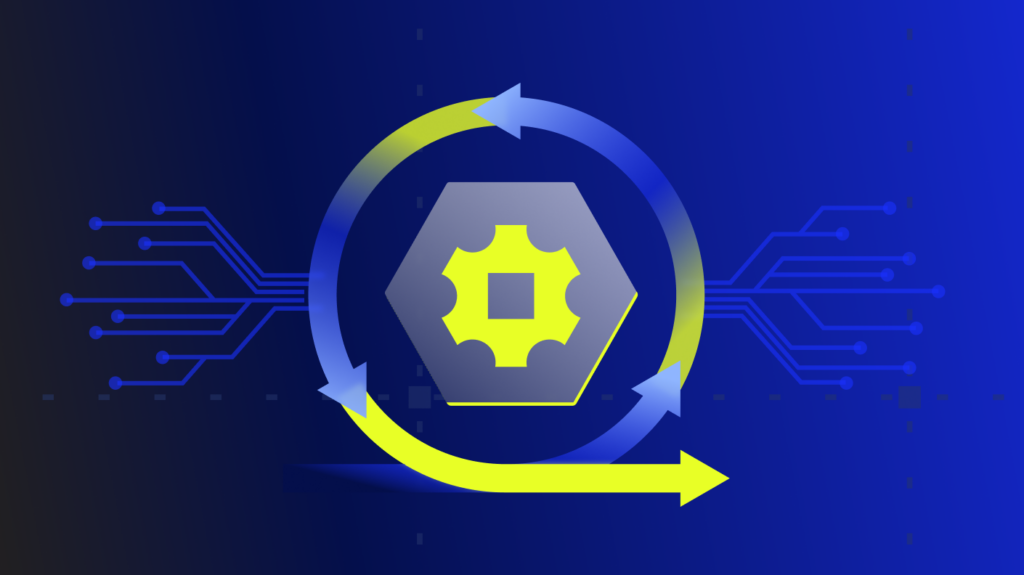Artificial intelligence (AI) and machine learning (ML), ever-evolving fields that are subtly and stunningly transforming our world, are now firmly rooted in most aspects of the current tech landscape and business processes. Their growth is exponential, and their effects are largely positive – fostering business endeavors, enhancing our quality of life, and shaping how we live, work, and interact. While some may harbor reservations, the potential of computers to learn, adapt, and drive innovation and efficiency across numerous industries is undeniable.
Among the numerous companies operating in this exciting sphere, Amazon Web Services (AWS) has emerged as a dominant player, offering a suite of powerful, scalable, and user-friendly AI services. Key among these are Amazon SageMaker, Amazon Rekognition, and Amazon Comprehend. These services, due to their capabilities and ease of use, have become quite popular, promising a high level of performance and sophisticated results that can streamline the use of online content.
The beauty of these AWS services is that they offer efficiency without necessitating a large cadre of data and programming professionals within your company. So, whether you’re fearful or fascinated by the rapid progression of AI and ML, the truth remains – they are here to stay.
Before diving into their respective use for your business, it’s crucial to understand the features, benefits, and the broader context in which AI and ML operate. In this blog, we aim to provide an introduction to these three remarkable AWS AI services and their potential offerings to businesses. We’ll delve into the most important details, helping you make an informed decision about their applicability to your needs. Enjoy the journey as we explore the revolution of AI with Amazon’s innovative tools.
Amazon SageMaker
Amazon SageMaker is a fully managed machine learning service provided by AWS public cloud. It simplifies the process of building, training, and deploying ML models at scale. With SageMaker, developers and data scientists can access a comprehensive set of tools and capabilities that accelerate the ML workflow.
Key features
Data preparation is one of SageMaker’s key features. SageMaker provides pre-built algorithms and frameworks for data preprocessing, feature engineering, and data visualization, allowing users to clean and prepare their datasets efficiently.
It also offers model training, which is a service that supports a wide range of ML algorithms, including built-in algorithms and popular frameworks like TensorFlow and PyTorch. SageMaker automatically scales resources to handle large datasets and parallelize training.
With model deployment, SageMaker makes it easy to deploy the model to production. It provides managed hosting, auto-scaling, and real-time inference capabilities, ensuring high availability and low latency.
After deployment, it can also help with model monitoring and management. SageMaker enables monitoring and analysis of deployed models, including real-time predictions, performance metrics, and drift detection. It helps in maintaining model accuracy over time.
SageMaker includes the following technologies:
Amazon Augmented AI – This feature builds workflows that allow humans to review ML predictions.
Batch Transform – You use this aspect to preprocess datasets and to associate input records with inferences.
SageMaker Data Wrangler – Allows you to prepare, import, and analyze data in SageMaker Studio. By integrating Data Wrangler into your ML workflow, you streamline data pre-processing and feature engineering by using minimal or no coding.
SageMaker Edge Manager – Enhances custom models for edge devices and creates fleets and run models that have an efficient runtime.
SageMaker Inference Recommender – This application gives you recommendations on inference instance types and configurations, such as instance count and model optimizations, for your LM models and workloads.
SageMaker Model Building Pipelines – You can build machine learning pipelines that are directly integrated with SageMaker jobs.
SageMaker Mode Registry – Allows versioning, approval workflow, cross-account support, and image tracking.
Other features include SageMaker Studio Notebooks and Amazon EMR, SageMaker Training Compiler, SageMaker Serverless Endpoints, Reinforcement Learning, and more.
Benefits and use cases of SageMaker
Amazon SageMaker has found applications in various domains. For example, with fraud detection, organizations can train models using historical transaction data to identify patterns indicative of fraudulent activities.
SageMaker can also be used to build personalized recommendation systems by analyzing user behavior and preferences, and image classification allows developers to create image classification models for tasks like object recognition and scene understanding.
As one of its biggest benefits, SageMaker offers on-demand scalability, allowing users to handle large datasets and complex ML workloads without worrying about infrastructure provisioning.
SageMaker is also cost-effective, offering a pay-as-you-go pricing model. You’ll only pay for the resources you use, and that helps optimize resource utilization and keep upfront costs lower. There’s also reduced complexity with SageMaker, and as a managed service the ML workflow is simplified. That eliminates the need to set up and manage infrastructure components manually.
Other places where SageMaker can boost productivity include automotive, hospitality, data analytics, retail, electronics, cloud services, healthcare, gaming, and more.
Amazon Rekognition
Amazon Rekognition is a software-as-a-service platform that simplifies adding image and video analysis to applications. It’s easy to use and only requires that you add an image or video to the Amazon Rekognition API for the service to identify people, scenes, activities, etc. The software can also identify inappropriate content as well as analyze and compare faces for various use cases.
Rekognition does not require ML skills to use, and it can analyze any image or video file stored in Amazon S3. The program continually learns from new data, and Amazon constantly adds new features to make it even more effective.
Key features
One of the main key features of Rekognition is object and scene detection through image processing. With this ability, Rekognition can identify and label objects and scenes in images and videos, enabling applications to automatically categorize and tag visual content.
Facial analysis is another key feature, allowing the service to analyze faces within images and video and provide insights such as age range estimation, emotions, gender, and facial landmarks. Coupled with this is text detection. Rekognition can extract text from images and videos, making it useful for tasks like document analysis and optical character recognition (OCR).
Additionally, content moderation offers capabilities for detecting explicit and suggestive content within images and videos, helping in enforcing content guidelines and filtering inappropriate content.
Rekognition includes the following functionalities
Image Moderation – This program identifies offensive and unwanted content, protecting users from problem content in social media, broadcast media, and e-commerce. It gives you control over what images are included in your messaging. This image analysis is essential for protecting your company’s reputation.
Labels/Custom Labels – Rekognition is able to identify thousands of objects, including cars, mobile phones, sporting events, etc. It also offers custom labels that identify objects important to your business operations, such as your company logo on social media and your products in retail stores.
Customizable Audio and Text Moderation – You can create your own list of unacceptable words and phrases with Rekognition’s text detection. This program allows you to convert speech in videos with Amazon Transcribe and then perform text analysis for hate speech or profanities.
Face Analysis – This lets you detect faces in images and videos and identifies key characteristics, including gender, age, facial hair, glasses, etc.
Face Search – Rekognition also lets you identify specific faces in photos or videos by using your own database of face images.
Safety Checks – Uses your in-house cameras and sensors to verify workers are wearing required safety gear such as masks, helmets, and gloves.
Use cases and benefits of Rekognition
Amazon Rekognition, a powerful image, and video analysis service by AWS, offers a multitude of benefits and use cases across various industries. Leveraging the power of deep learning models, Rekognition can analyze and process large volumes of visual data with high accuracy and efficiency. Its applications are diverse and far-reaching.
In the realm of security and surveillance, Rekognition shines in real-time video footage analysis. It detects, tracks, and records objects, faces, and activities, proving indispensable for maintaining safety and preventing security breaches. Law enforcement agencies utilize its image and facial recognition capabilities to more accurately and easily identify crime suspects, enhancing public and home security.
The service also excels in media analysis, enabling automatic tagging and categorization of visual content. This enhances content search, organization, and recommendation, ultimately improving company efficiency and profitability. Its use is not limited to security and media industries. In the field of autonomous driving, auto manufacturers utilize Rekognition to improve self-driving car navigation, making these vehicles a safer and more practical travel option.
Amazon Rekognition has also made significant strides in enhancing human-computer interaction. By identifying consumer retail preferences or providing safer and faster banking services, Rekognition has improved customer satisfaction with computer-based services.
One of the most impactful uses of Rekognition is in medical imaging. By increasing the speed and accuracy of diagnoses, it has the potential to improve cure rates and life expectancy, bringing significant benefits to patients.
User verification is another area where Rekognition excels. Comparing captured facial features in images or videos against stored profiles, enables applications to verify user identities effectively.
A standout benefit of Amazon Rekognition is its ease of integration. With simple SDKs and APIs, it can be seamlessly integrated into workflows and applications. Furthermore, its high scalability allows it to handle vast volumes of images and videos, processing large amounts of data quickly.
Amazon Rekognition is continuously being improved by AWS, ensuring the highest levels of accuracy and performance in tasks involving image and video analysis. Satisfied users of this service include prominent companies like Smug Mug, ZOZO, Mobisocial, and Artfinder, testifying to its efficacy and broad applicability.
Amazon Comprehend
Amazon Comprehend is a natural language processing (NLP) service that helps uncover insights and relationships within text data. It uses advanced ML techniques for text analysis and provides valuable information, enabling organizations to extract meaning and gain actionable insights from their textual data.
Amazon Comprehend is natural language processing (NLP) software that uses machine learning to analyze the content of documents. It can recognize key phrases, language, attitudes, and entities to garner insights about the document.
Amazon Comprehend allows you to develop new products by better understanding these documents, particularly their structure. For instance, you can search social networks for product mentions or simply scan for key phrases.
Amazon Comprehend can analyze documents in multiple languages and accepts UTF-8 text documents as input. No ML experience is necessary to use this software.
Key Features
Sentiment analysis is one of the key features of this service. Comprehend can determine the sentiment (positive, negative, neutral) expressed in a piece of text, making it useful for analyzing customer feedback and social media posts. The service also offers entity recognition, which can identify and categorize entities such as people, organizations, locations, and dates within the text, aiding in information extraction and organization.
Another key feature of Sentiment is language detection. This service can automatically detect the language of a given text, allowing applications to handle multilingual content effectively. With keyphrase extraction as a part of its text analysis capabilities, Comprehend can extract important keywords and phrases from the text, enabling applications to understand the main topics and themes within a document.
Functionalities of Comprehend
Custom Entity Recognition – This feature allows for Amazon Comprehend customization tailored to identify specific terms of your choice. AutoML lets the software learn from a few examples, such as SSNs or policy numbers. Then it is able to recognize these terms from text blocks in PDFs, Microsoft Word docs, etc.
Entity Recognition – This API identifies the automatically categorized entities, such as “people,” that appear in the designated text.
Sentiment Analysis – This aspect identifies and returns the overall “sentiment” or tone of a text. The label may be “positive,” “ negative,” “ neutral,” or “mixed.”
PII Identification and Redaction – Comprehend can find and remove personally identifiable information (PII). This process works for support tickets, product reviews, customer emails, and more. Again, no ML experience is required to use this feature of Comprehend.
Language Detection – It can automatically identify over 100 languages in various text forms.
Syntax Analysis – The software can analyze text to define word boundaries, parts of speech, etc., and provide a confidence score.
Other features include Topic Modeling, Events Detection, Keyphrase Extraction, and Custom Classification.
Use cases and benefits
Amazon Comprehend has been utilized in various domains for tasks including social media analysis. It can analyze social media feeds to understand customer opinions, sentiment trends, and emerging topics. It also works with document classification and enables automated classification of documents based on their content, improving search and organization capabilities.
Through the voice of the customer benefit, Comprehend helps in analyzing customer reviews, surveys, and support tickets, allowing organizations to gain insights into customer preferences and pain points.
Easy-to-use APIs are another significant benefit, as Comprehend provides simple APIs that allow developers to integrate NLP capabilities into their applications with minimal effort. The service also supports several languages, allowing organizations to analyze text in multiple languages and handle global content effectively.
Customizability rounds out the list of big benefits. Comprehend allows users to train custom models with their own data, tailoring the service to specific industry domains and use cases.
Some of the use cases for Comprehend include:
- Analytics of Customer Sentiment – You can use customer feedback to determine whether customers are positive, negative, neutral, etc.
- Data Management and Knowledge Discovery – You are able to analyze multiple documents and automatically organize them by topic. This process then lets you personalize content for your customers.
- Semantic Search – Your search engine can index key phrases, sentiments, and entities, which means the focus is on article intent and context instead of keywords.
How the Three Services Compare
Amazon SageMaker is a comprehensive platform for building, training, and deploying machine learning models. It offers a wide range of tools and services, including data preparation, model training, hyperparameter tuning, and model hosting.
On the other hand, Amazon Rekognition is a deep learning-based image and video analysis service. It provides capabilities for object and scene detection, facial analysis, content moderation, and text recognition.
Amazon Comprehend focuses on natural language processing (NLP) tasks. It offers pre-trained models for key NLP tasks like sentiment analysis, entity recognition, topic modeling, and language detection.
SageMaker, Rekognition, and Comprehend Complement One Another
| Feature | Amazon SageMaker | Amazon Rekognition | Amazon Comprehend |
| Machine Learning | Provides a fully-managed ML development platform for building, training, and deploying models. | Offers image and video analysis capabilities, such as object detection, facial analysis, and content moderation. | Utilizes natural language processing (NLP) techniques to extract insights from text, including sentiment analysis, entity recognition, and topic modeling. |
| Custom Models | Enables developers to create and train custom ML models using popular frameworks and libraries. | Supports custom model training and integration with SageMaker for more specialized image analysis tasks. | Allows training custom models for NLP tasks like entity recognition and sentiment analysis using custom training data. |
| Pre-built Models | Provides a wide range of pre-built algorithms and models, including popular ML models for various tasks. | Offers pre-trained models for common image analysis tasks, such as face recognition and celebrity recognition. | Provides pre-trained models for NLP tasks, such as language detection, keyphrase extraction, and document classification. |
| Data Labeling | Supports data labeling workflows to annotate and prepare training data for ML models. | Offers an integrated data labeling service for tasks like object detection and image classification. | Provides a custom entity recognition annotation tool to label text data for training NLP models. |
| Real-time Analysis | Allows real-time deployment of ML models to process incoming data and generate predictions. | Enables real-time image and video analysis for applications like video surveillance and content moderation. | Provides real-time text analysis capabilities for applications like social media monitoring and customer support chatbots. |
| Integration | Seamlessly integrates with other AWS services, such as Amazon S3 for data storage and AWS Lambda for serverless computing. | Can be integrated with other AWS services like Amazon S3 and AWS Lambda for scalable image and video analysis workflows. | Integrates with AWS services like Amazon S3 and AWS Lambda to process text data and trigger automated actions. |
| Scalability | Offers automatic scaling and resource provisioning to handle large-scale ML workloads. | Provides scalable image and video analysis capabilities to handle large volumes of media data. | Supports scalable NLP processing to analyze large amounts of text data efficiently. |
| Industry-specific Solutions | Offers industry-specific solutions through SageMaker built-in algorithms and frameworks. | Provides industry-specific image analysis solutions, such as face comparison for identity verification and text detection for document processing. | Offers industry-specific NLP solutions, such as medical entity extraction for healthcare and sentiment analysis for customer feedback analysis. |
The power of SageMaker, Rekognition, and Comprehend combined
Your company needs the power of predictive analytics, something that is simplified by using SageMaker. With this service, you can harness the power of ML in much less time and with little difficulty. But predictive analytics alone cannot accomplish what your company needs.
By adding Amazon Rekognition, you get the power of image and video analysis which quickly identifies entities and objects and also screens for profanity and other troublesome features. And while it can analyze video text, you need Comprehend to tackle the majority of needed text analysis.
By combining all three software services, you get the comprehensive analysis you need to produce effective, meaningful online content.
The Bottom Line on SageMaker, Rekognition, and Comprehend
Whether it’s building and deploying ML models, analyzing images and videos, or extracting insights from text, Amazon SageMaker, Amazon Rekognition, and Amazon Comprehend are scalable and cost-effective solutions for a wide range of applications. By leveraging these services, businesses can unlock the potential of AI and drive innovation in their respective industries.
Subscribe to our blog
Get articles like this delivered straight to your inbox







